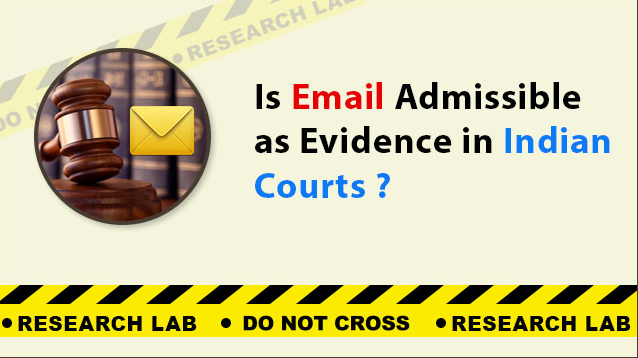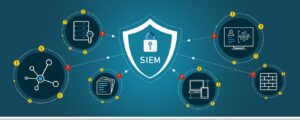Email forensics plays a pivotal role in the investigative landscape, particularly in legal proceedings where digital evidence is crucial. Unraveling the complexities of email communications requires a sophisticated understanding of forensic techniques, adherence to strict evidentiary procedures, and the integration of advanced technologies. In this comprehensive guide, we delve into the methodologies, challenges, and best practices associated with email forensics and evidentiary procedures.
Understanding the Landscape of Email Forensics
1. Scope of Email Forensics:
-
Email forensics involves the investigation and analysis of email communications to extract digital evidence for legal purposes.
-
It encompasses a range of activities, from tracing the source of emails to recovering deleted messages.
2. Digital Evidence in Legal Proceedings:
-
Emails often serve as critical pieces of evidence in legal cases, providing insights into communications, intentions, and actions.
3. Types of Cases:
-
Email forensics is applied across various types of cases, including cybercrime investigations, corporate fraud, intellectual property theft, and family law matters.
Methodologies in Email Forensics
1. Email Header Analysis:
-
Metadata Examination: Analyzing email header for metadata such as sender and recipient details, timestamps, and server information.
-
IP Address Tracing: Tracing the geographical origin of emails by examining IP addresses recorded in the headers.
2. Content Analysis:
-
Keyword Search: Conducting keyword searches within email content to identify relevant information.
-
Attachment Examination: Analyzing attachments for potential evidence, such as files, images, or malicious content.
3. Deleted Email Recovery:
-
Forensic Tools: Employing specialized forensic tools to recover deleted emails and attachments.
-
File Carving: Using file carving techniques to extract fragments of deleted email data from storage media.
4. Timeline Reconstruction:
-
Timestamp Analysis: Reconstructing timelines of events by analyzing timestamps in emails.
-
Correlation with Other Evidence: Cross-referencing email timelines with other digital or physical evidence.
5. Authentication Measures:
-
Digital Signatures: Verifying digital signatures to ensure the integrity and authenticity of emails.
-
Sender Verification: Confirming the legitimacy of the sender’s identity through various authentication measures.
6. Collaboration with ISPs and Service Providers:
-
Legal Processes: Engaging with Internet Service Providers and email service providers through legal processes to obtain relevant data.
-
Preservation Requests: Issuing preservation requests to prevent the deletion of critical email data.
Evidentiary Procedures in Email Forensics
1. Legal Authorization:
-
Search Warrants: Ensuring legal authorization through search warrants or court orders for the collection and analysis of email evidence.
-
Consent: Obtaining voluntary consent from relevant parties for accessing their email data.
2. Chain of Custody:
-
Documentation: Maintaining a meticulous chain of custody for all seized digital evidence.
-
Preservation: Ensuring the preservation of the original state of email evidence admissibility in court.
3. Expert Testimony:
-
Forensic Experts: Providing expert testimony in court to explain methodologies, findings, and the significance of email evidence.
-
Admissibility Challenges: Addressing potential challenges to the admissibility of email evidence raised by opposing parties.
4. Privacy Considerations:
-
Data Minimization: Collecting only the necessary data to minimize intrusion into individuals’ privacy.
-
Compliance with Privacy Laws: Ensuring that all procedures adhere to privacy laws and ethical standards.
5. Documentation of Findings:
-
Comprehensive Reporting: Documenting findings from email forensics in a clear and comprehensive manner.
-
Data Integrity: Verifying the integrity of email evidence throughout the forensic process.
Challenges in Email Forensics and Evidentiary Procedures
1. Encryption Challenges:
-
End-to-End Encryption: Challenges in accessing the content of emails due to increasing use of end-to-end encryption.
-
Legal Frameworks for Decryption: Navigating legal frameworks for lawful decryption of encrypted communications.
2. Email Spoofing and Phishing:
-
Address Forgery: Dealing with email spoofing techniques that forge sender addresses.
-
Phishing Investigations: Uncovering and attributing emails involved in phishing attacks.
3. Data Retention Policies:
-
Automatic Deletion: Addressing data retention policies of email service providers that may lead to the automatic deletion of emails.
4. Global Jurisdictional Issues:
-
Cross-Border Investigations: Handling complexities arising from investigations that span multiple jurisdictions.
-
International Collaboration: Strengthening collaboration with international law enforcement agencies to address jurisdictional challenges.
Best Practices for Email Forensics and Evidentiary Procedures
1. Continuous Training:
-
Skill Development: Providing ongoing training for digital forensics experts and legal professionals.
-
Technological Adaptation: Staying informed about the latest forensic tools and technologies.
2. Interagency Collaboration:
-
Law Enforcement Collaboration: Fostering collaboration between law enforcement agencies, cybersecurity experts, and digital forensics professionals.
-
Information Sharing: Sharing best practices and insights among agencies involved in email forensics.
3. Privacy Protection:
-
Redaction of Sensitive Information: Redacting sensitive information from email evidence to protect individual privacy.
-
Legal Safeguards: Implementing legal safeguards to ensure the responsible handling of private data.
4. Legal Consultation:
-
Early Legal Consultation: Seeking legal consultation early in the investigative process to ensure compliance with legal standards.
-
Legal Expertise: Involving legal experts in the interpretation and application of legal frameworks related to email forensics.
Real-World Applications: Case Studies
1. Enron Scandal:
-
In the Enron scandal, email forensics played a crucial role in uncovering corporate fraud and providing evidence for legal proceedings.
2. Business Email Compromise (BEC) Cases:
-
Numerous successful prosecutions in BEC cases globally have relied on email forensics to trace the origin of fraudulent communications.
Future Trends in Email Forensics and Evidentiary Procedures
1. Advancements in Forensic Technology:
-
Automated Analysis: Integration of artificial intelligence for automated analysis of email evidence.
-
Blockchain Integration: Exploring the integration of blockchain for enhancing the integrity of forensic data.
2. Global Standards and Regulations:
-
Harmonized Legal Frameworks: Efforts towards establishing global standards and regulations for digital evidence collection and email forensics.
Conclusion
Email forensics and evidentiary procedures form a critical component of modern investigations, providing a digital trail that can unravel complex cases. As technology evolves and digital communication methods diversify, the field of email forensics must continually adapt. By embracing best practices, fostering collaboration, and staying abreast of technological advancements, investigators and legal professionals can navigate the intricate digital landscape to ensure the effective collection, analysis, and presentation of email evidence in legal proceedings.
















